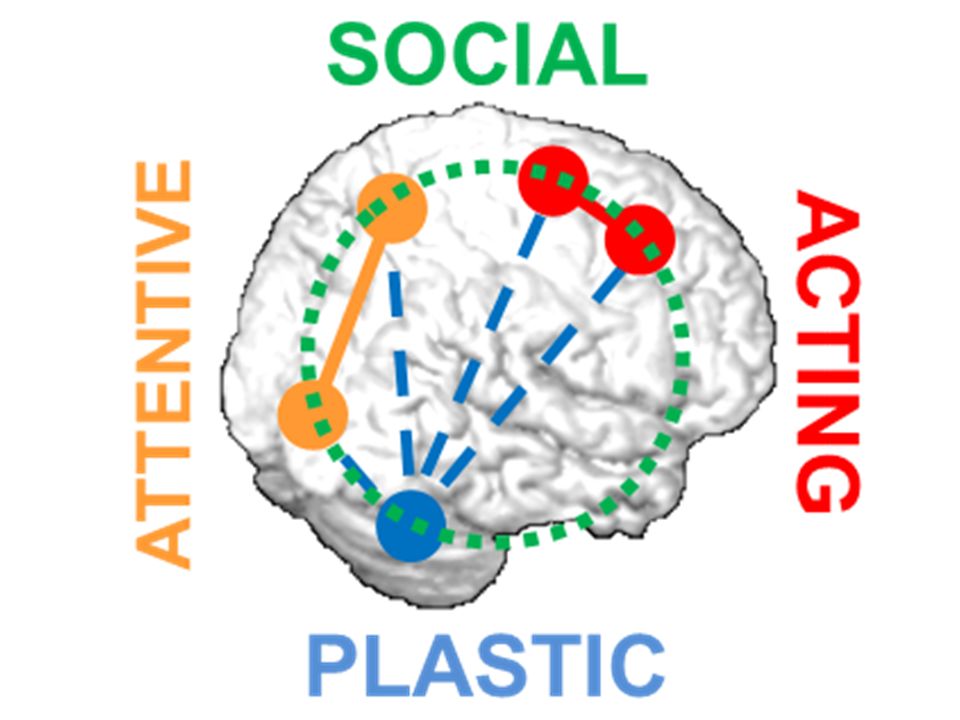Neural substrates of saccadic adaptation: Plastic changes versus error processing and forward versus backward learning
Résumé
Previous behavioral, clinical, and neuroimaging studies suggest that the neural substrates of adaptation of saccadic eye movements involve, beyond the central role of the cerebellum, several, still incompletely determined, cortical areas. Furthermore, no neuroimaging study has yet tackled the differences between saccade lengthening ( "forward adaptation ") and shortening ( "backward adaptation ") and neither between their two main components, i.e. error processing and oculomotor changes. The present fMRI study was designed to fill these gaps. Blood-oxygen-level-dependent (BOLD) signal and eye movements of 24 healthy volunteers were acquired while performing reactive saccades under 4 conditions repeated in short blocks of 16 trials: systematic target jump during the saccade and in the saccade direction (forward: FW) or in the opposite direction (backward: BW), randomly directed FW or BW target jump during the saccade (random: RND) and no intra-saccadic target jump (stationary: STA). BOLD signals were analyzed both through general linear model (GLM) approaches applied at the whole-brain level and through sensitive Multi-Variate Pattern Analyses (MVPA) applied to 34 regions of interest (ROIs) identified from independent 'Saccade Localizer' functional data. Oculomotor data were consistent with successful induction of forward and backward adaptation in FW and BW blocks, respectively. The different analyses of voxel activation patterns (MVPAs) disclosed the involvement of 1) a set of ROIs specifically related to adaptation in the right occipital cortex, right and left MT/MST, right FEF and right pallidum; 2) several ROIs specifically involved in error signal processing in the left occipital cortex, left PEF, left precuneus, Medial Cingulate cortex (MCC), left inferior and right superior cerebellum; 3) ROIs specific to the direction of adaptation in the occipital cortex and MT/MST (left and right hemispheres for FW and BW, respectively) and in the pallidum of the right hemisphere (FW). The involvement of the left PEF and of the (left and right) occipital cortex were further supported and qualified by the whole brain GLM analysis: clusters of increased activity were found in PEF for the RND versus STA contrast (related to error processing) and in the left (right) occipital cortex for the FW (BW) versus STA contrasts [related to the FW (BW) direction of error and/or adaptation]. The present study both adds complementary data to the growing literature supporting a role of the cerebral cortex in saccadic adaptation through feedback and feedforward relationships with the cerebellum and provides the basis for improving conceptual frameworks of oculomotor plasticity and of its link with spatial cognition.
| Origine | Fichiers produits par l'(les) auteur(s) |
|---|---|
| licence |





